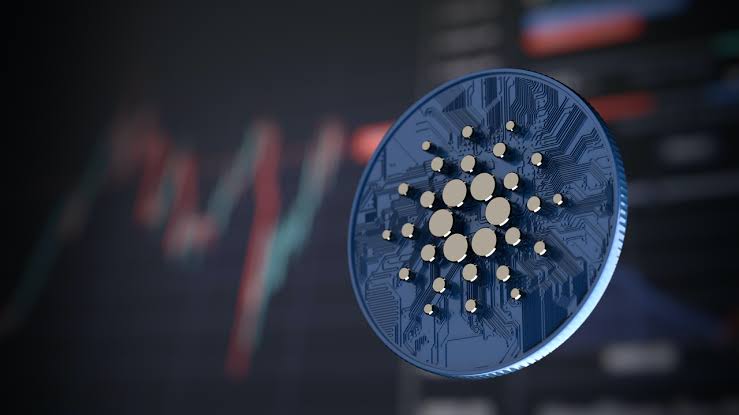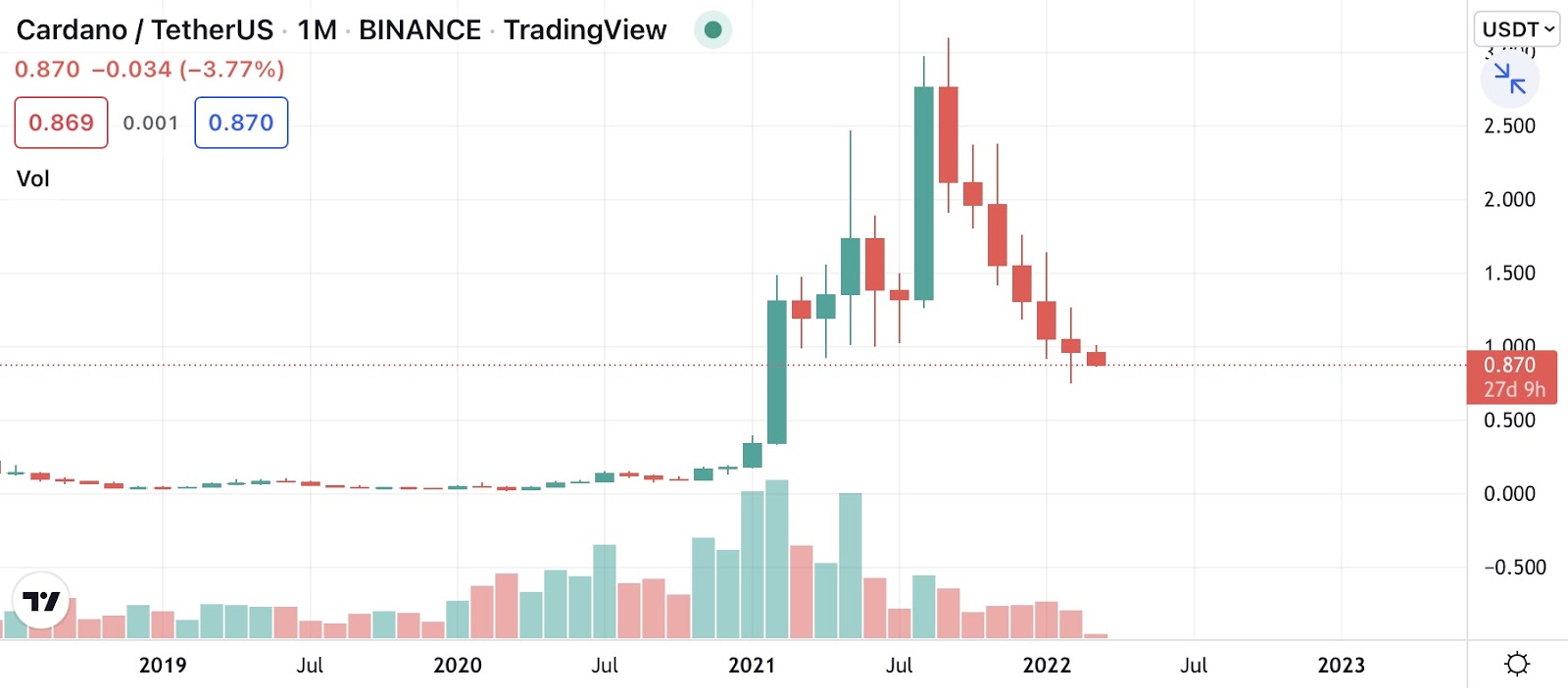Due to the sluggish start to life of Cardano smart contract deployment and other variables, the Cardano network token ADA has endured stormy times since its all-time highs in early September 2021.

Cardano (ADA), presently trading far below $1 and reflecting a continuation of the extended bearish trend for the largest Proof-of-Stake (PoS) asset, is forming a red candle for the seventh month in a row.
Cardano has had a red candle monthly closure for the past six months, indicating that it has lost more value at the end of the month than at the beginning. In Cardano last closed the month in profit in August 2021.

The price of ADA skyrocketed in summer 2021, reaching a high of $3.1 and a year-to-date return of 1600%, making it the best-performing major cryptocurrency at the time.
However, it’s currently trading at a dismal $0.87, which isn’t awful considering it’s still a top ten cryptocurrency by market cap, but the coin has lost more than 70% of its value and is flirting with one-year lows with no signs of recovery in sight.
Why the plunge?
Cardano may have underperformed the cryptocurrency market as a whole, but it isn’t the only one.
The market’s risk-off mindset has weighed severely on Cardano’s sentiments. Traders and investors are increasingly fleeing riskier assets like cryptocurrency in search of protection in safe havens. Geopolitical tensions between Russia and Ukraine, which have attracted the attention of the United States and the United Kingdom, among other countries, are fueling a wave of caution in the financial world.
Investors have been forced to hedge their portfolios as a result of the growing tensions, opting for safe havens such as the US dollar and gold. In the face of global uncertainty, most investors have decided to sell riskier assets in favor of what they consider to be safer investments.
Unlike Ethereum, Solana, and Terra, which are some of its biggest competitors. The network has yet to bring on projects with the capacity to lock in significant financial value.
The platform achieved an amazing feat when compared to its previous year’s level of barely more than $3 million, with its total value locked (TVL) surpassing $200 million, but it is still far behind its major competitors, such as Solana, Terra, and Ethereum, which all have billions locked in their networks.
So, what’s next?
The Cardano blockchain is now experiencing some difficulties, but this will not last long. Despite the negative news and headwinds, Cardano is a force to be reckoned with, and it is expected to recover once the dust settles.
Engineers working on the project are developing a scaling solution that includes Hydra, which might be a game-changer in the future.
In addition to enhancing the volume of data that the Cardano blockchain can process, the software engineers are trying to reduce the time it takes to complete transactions. There is also a movement to increase the amount of work that can be done on the blockchain at the same time.
While Cardano has been hammered in the market, considering the efforts being made to strengthen the blockchain and make it more effective in processing transactions, the future can only be bright.